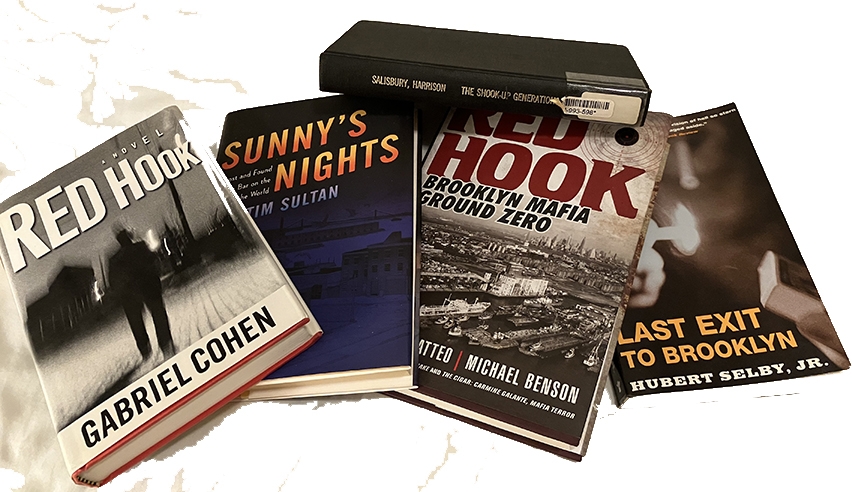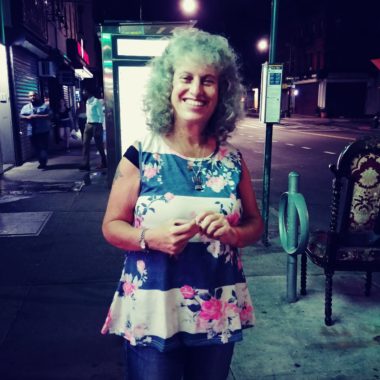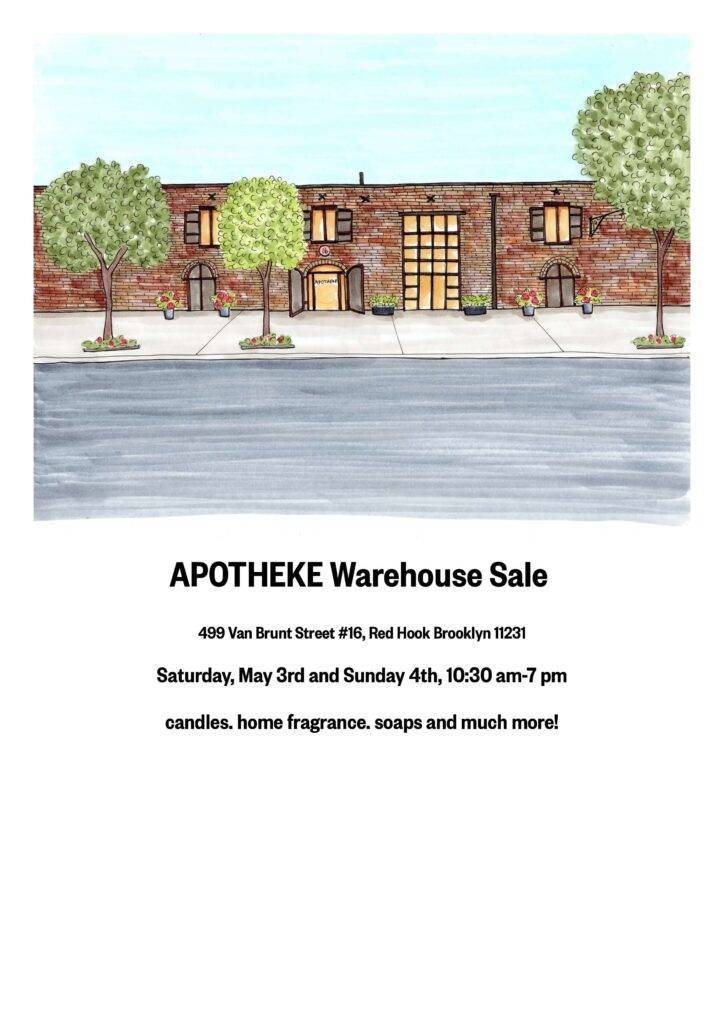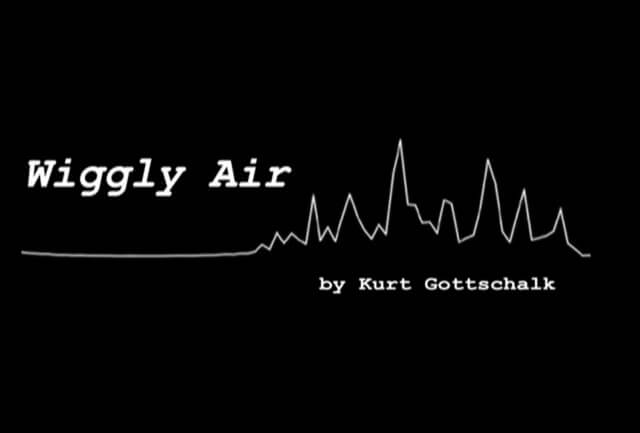I live in Red Hook, a couple blocks from the water, in one of those mammoth brick buildings that used to be a school. When I lie in bed I can gaze at the World Trade Center spire’s LED light display until it vanishes into the dark sky at precisely 2 am. I love my neighborhood with a passion. I love its fun and funky main drags and I love its rough and weedy back streets.
Compared with the soulless midwestern suburbs that imprisoned me as a kid, our scruffy, post-industrial, graffiti-splattered peninsula with its storied history inspires me both as a writer and a human being trying to exercise kindness in spite of being perpetually pissed off. Part of exercising kindness is accepting the humanity of the officials at the Economic Development Corporation, a satellite of the city of New York, whose plan for redeveloping the 122 acre Brooklyn Marine Terminal includes the construction of scores of luxury towers along our waterfront, stripping away the funky, salty flavor of our neighborhood and transforming it into one more gentrified blob of real estate like Williamsburg or Long Island City or now, poor old Gowanus.
Private luxury community
What is pissing me off is their amoral insistence on installing on our precious waterfront a private luxury community that would double our population and release hordes of tech bros, financiers and trust fund kids onto our streets, strutting around among my tough, funny, struggling black and brown neighbors who have lived here for generations, and the more recent arrivals, the artists, musicians, writers, merchants, urban planners, activists, and all-around good guys who moved here not to refashion the neighborhood in their own image but to blend in with it because they respected its working-class identity.
Old timers here remember the sweet things about the Red Hook of yore — the markets hawking their delicacies, the riotous street games, the days in the Houses when people left their doors open and kids ran through the halls, stopping in random apartments for a free meal. But Red Hook is also Brooklyn’s Wild West. In spite of some troubling changes, including escalating costs, it’s still the rough-and-tumble waterfront where only the brave and bold dared to venture for much of the 20th Century. Not that long ago our neighborhood was a hardscrabble place where tattooed men guzzled boilermakers after loading cargo onto barges, and kid gangs engaged in dust-ups with switchblades and zipguns, and packs of wild dogs roamed the streets, and lost souls stuck needles in their arms, and mothers and fathers worked themselves to the bone to keep their kids from starving.
It was this badass Red Hook that has inspired the best creative work, the books and films, the theater and music and artwork, that pay homage to us in all its terrible glory.
I can’t imagine that the EDC executives who want to sell out Red Hook to rapacious private developers would bother to locate on their devices the 1989 movie, Last Exit to Brooklyn, based on Hubert Selby Jr.’s 1950s novel about punks, drunks, queers and whores slinking through rough industrial streets.
They probably would not appreciate Jennifer Jason Leigh’s brilliant portrayal of the truculent whore, Tralala, or Stephen Lang’s unsettling impersonation of Harry, the creepy, closeted union steward who ends up being savagely beaten by the neighborhood toughs he has been befriending.
Nor would the bureaucrats be awed by the film’s re-creation of mid-20th-century Red Hook with its monstrous brick warehouses, slimy canals, trashy vacant lots, greasy-spoon diners and haunted denizens stumbling, flailing, and shrieking through their days.
I’m sure the technocratic suits would be unimpressed by the cinematic sensitivity of Straight Out of Brooklyn, the 1991 film about three jittery Red Hook boys hatching a plan to rob a drug dealer to free their families from the indignities of the projects.
I suppose the suits would give a grudging nod to On the Waterfront, because of Marlon Brando, but rub their hands together in anticipation of eliminating all traces of that uber-masculine dockside world, so integral to Red Hook’s living history.
I would be shocked if the people planning to transform Red Hook into a homogenized blob would seek out the works of the many authors who have been inspired by Red Hook’s gritty magnetism. If they did, they might be enlightened by journalist Harrison Salisbury’s brilliant mid-Century treatise on juvenile delinquency, The Shook-up Generation, which begins with the author’s disembarking from the subway at the Smith-Ninth Street station, which he noted was “the highest elevated station in New York City,” and his taking note of the graffiti covering the walls. (The platform and stair walls of the Smith-Ninth station are covered with what first appears to be an embroidery, but it is not embroidery. It is a living newspaper of the streets.”) I wish I could introduce the clueless technocrats to Tim Sultan’s charming memoir, Sunny’s Nights, a series of stories about slinging drinks in the 90s at Sunny’s Bar, one of New York’s most atmospheric watering holes.
Good luck getting the EDC suits to take note of a wandering young man’s lyrical musings in Gabriel Cohen’s crime novel, Red Hook. (“…the Hook was so quiet that the wind was a presence; it whispered over the cobblestones and flowed around the deserted warehouses; it sifted through primitive, fernlike ailanthus trees.”) The suits may have heard of James McBride’s famous memoir, The Color of Water, about growing up as a Black and Jewish kid in Red Hook, but probably do not appreciate its revelatory depth, nor the compelling narration of his novel, Deacon King Kong. (“For years, the New York City Housing Authority, a mega-mass of bloated bureaucracy, a hotbed of grift, graft, games, payola bums, deadbeat dads, payoff racketeers, and old-time political appointees who lorded over the Cause Houses…had inexplicably belched forth a phenomenal gem of a gift to the Cause Houses: free cheese.”)
And finally, I bet my bottom dollar that the EDC bigwigs and their sycophantic underlings would be utterly repelled by Frank DeMatteo’s description of an infamous family friend in a new book, Red Hook: Brooklyn Mafia, Ground Zero, (written with Michael Benson), a historical account of organized crime in our front and back yards. (“Joey Gallo was small in stature, with balls of steel. He laughed like Frank Gorshin as the Riddler on the old Batman TV show.”)
The EDC officials want to wipe away all traces of badass Red Hook. They would say that I romanticize crime and urban decay, that they are the new urban pioneers, ready to transform Red Hook into a glass-and-tower paradise that will help to finance the redevelopment of our waterfront.
But they are snake oil salesmen, and they are fooling no one in this community. We all know there are other sources of income that can beautifully refurbish the Brooklyn Marine Terminal, and keep the surrounding property public. Furthermore, their insistence that their luxury towers will provide affordable housing is a joke. Few of my friends and neighbors would be able to afford this “affordable” housing, nor would they want to foolishly relocate to a flood zone, where this kind of construction should be prohibited by law.
If the EDC executives suddenly listened to their better angels and shelved their odious plan, they would be able to congratulate themselves for helping to preserve a celebrated neighborhood that retains the proud scars and bruises of its colorful working-class history.
But these dumbbells want to wipe it all away. They want to corporatize Red Hook. And then Red Hook won’t be Red Hook anymore. It will be just another homogenized area of the city, like boring Soho, once a vibrant countercultural haven that has been transformed into a tourist trap, with its sandblasted buildings and glitzy clothing stores.
Only people who love New York should have the right to impose dramatic changes to it.
The EDC planners may live in New York but they do not love it. Like the real estate developers who are licking their chops to ransack our neighborhood, they love money and power, or like any number of bureaucrats they are desperate to hang onto their lucrative jobs, and so they keep trying to shove their plan down our throats and then sling bullshit at us in their bogus “community” meetings. They are willing participants in the ruination of New York City, and they are part of what’s wrong with this city and this country and the world.
I hear people say that their hideous plan is a “done deal.” But we have not yet heard the fat lady sing.
Author
Discover more from Red Hook Star-Revue
Subscribe to get the latest posts sent to your email.











One Comment
Bravo, Lisa. What makes New York unique is its diverse neighborhoods. The “planners” have no appreciation for that. They’d just as soon convert Brooklyn into a gigantic string of condos with a few “lottery” apartments tacked on and call it inevitable.